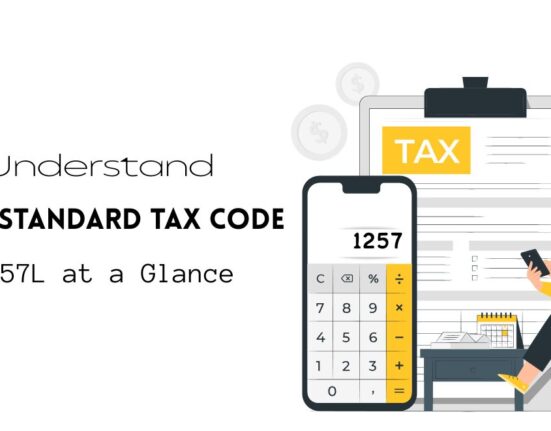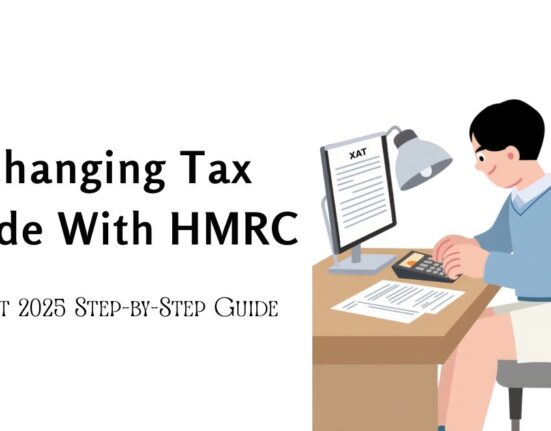There are a few things that cause more anxiety than opening a brown envelope stamped “HMRC.” Is it good news or bad? A bill or a refund?
If you’ve received a P800 tax calculation letter, it usually means one thing: HMRC has checked your records and realised you either overpaid or underpaid income tax in the last tax year. For many people, it’s welcome news—a P800 refund can put money back in your pocket. For others, it can mean there’s tax to pay.
Each year, millions of taxpayers in the UK get these letters. Yet confusion around what a P800 refund is, how to claim it, and how long it takes is huge. This guide breaks it down clearly—so you know what’s happening, what to do next, and how to avoid mistakes.
What Is a P800 Refund?
A P800 refund is a repayment of tax you’ve overpaid through the UK’s PAYE (Pay As You Earn) system. HMRC reviews your tax position after the end of each tax year (6 April – 5 April) and issues a P800 tax calculation letter if your payments don’t match what you actually owed.
The P800 letter tells you whether:
- You’ve overpaid tax → you’re due a refund.
- You’ve underpaid tax → you owe HMRC money.
Do HMRC automatically refund overpaid tax? Sometimes. If the overpayment is small or simple, HMRC may issue a cheque or send money straight to your bank account. But most of the time, you’ll need to log into your personal tax account via www.gov.uk/p800refund and claim it yourself.
Think of the P800 as HMRC’s way of balancing the books—it’s not a penalty, just a correction.
Who Receives a P800 Refund?
Not everyone gets a P800. It’s usually sent to taxpayers whose circumstances changed during the year, and the PAYE system didn’t keep up.
Common situations include:
- Wrong tax code: You were put on an emergency tax code or an incorrect one.
- Job changes: Starting or leaving a job, or having multiple jobs in one tax year.
- State pension or benefits: Not all payments are taxed correctly through PAYE.
- Stopping work mid-year: If you left a job and didn’t work again that year.
- Pension income + employment: Having both can confuse PAYE.
Example: Someone changes jobs in November, their employer applies an emergency tax code, and too much income tax is deducted. At year’s end, HMRC spots the overpayment, issues a P800 refund notice, and invites them to claim.
How to Claim a P800 Refund Online
If your P800 shows an overpayment, you’ll want to claim your refund quickly. The easiest way is through HMRC’s secure online system.
Step-by-step guide:
- Go to the official uk p800 refund login page.
- Sign in using your Government Gateway ID (or create one if you haven’t).
- Open your personal tax account and view your P800 calculation.
- Select how you’d like to receive the refund:
- Bank transfer → usually paid within 5 working days.
- Cheque → sent by post, takes longer.
HMRC tax refund, check online: Once logged in, you can also check whether a refund has been processed or is still pending.
Pro tip: Double-check your bank account details. Wrong info can cause serious delays.
How Long Does a P800 Refund Take?
Timing depends on how you claim:
- Online bank transfer: Usually within 3–5 working days.
- Cheque: Up to 2 weeks (postal delays possible).
PASF query answered: How long does it take for HMRC tax refund to go into the bank? → Expect it in under a week if claimed online.
Delays can happen if:
- Bank details are wrong.
- HMRC needs to cross-check your tax records.
- Your employer reported PAYE late.
Breaking Down the P800 Tax Calculation
The P800 tax calculation letter looks complicated, but here’s what to focus on:
- Income: Total earnings, pensions, or benefits reported.
- Tax paid: What your employer(s) deducted.
- Correct amount of tax: What you should have paid.
- Difference: Refund due or underpayment owed.
- P800 reference number: Unique code needed if you contact HMRC.
Example:
- Income: £32,000
- Tax paid: £6,800
- Correct tax: £6,200
- Difference: £600 refund due
This breakdown shows where the mismatch occurred and confirms whether HMRC owes you—or vice versa.
When You Owe Tax Instead of a Refund
Not all P800 letters are happy news. If HMRC calculates you underpaid tax, you’ll need to repay.
Ways this happens:
- Benefits weren’t taxed.
- Wrong tax code gave you too much personal allowance.
- Employer payroll errors.
Repayment process:
- Small amounts: Automatically adjusted in your next year’s tax code.
- Larger amounts: HMRC sends a tax bill and instructions on how to pay.
It’s not optional—underpaid tax must be repaid. But HMRC often allows instalments if needed.
Common Issues & Mistakes With P800 Refunds
1. Scam alerts
Fraudsters know people expect tax refunds. Fake texts, emails, and calls pretending to be HMRC are common. Remember:
- HMRC will never text or email you asking for bank details.
- Always claim through uk only.
2. Wrong bank details
Typos in your bank account number or sort code cause delays.
3. Confusing P800 with Self Assessment
- P800 = PAYE taxpayers.
- Self-assessment tax returns are different and won’t trigger a P800.
4. Employer payroll errors
If your employer files incorrect data, HMRC’s calculation may be off.
When to Contact HMRC Tax Refund Team:
- Your refund hasn’t arrived after 3 weeks.
- The amount looks wrong.
- You spot errors in income or allowances.
P800 Refund vs Other UK Tax Rebates
It’s easy to confuse different refunds. Here’s how they differ:
| Refund Type | Who It Applies To | How It Works | Example |
| P800 refund | PAYE taxpayers | HMRC recalculates yearly tax | Overpaid on the wrong code |
| Self Assessment refund | Self-employed, landlords, higher earners | Overpayment shown on the return | Over-claimed expenses |
| Council tax rebate | Households | Local council refund | Energy bill support |
| Other rebates | Students, pensioners, uniform wearers | Claim via HMRC forms | Tax reliefs on work clothing |
Pro Tips to Avoid Future P800 Surprises
- Keep all P60s, P45s, and payslips.
- Update HMRC immediately if you change jobs or benefits.
- Regularly check your personal tax account.
- Watch for wrong tax codes on payslips.
- Only trust uk—ignore suspicious calls or emails.
FAQs
Q1. What is a P800 tax refund?
A P800 refund is money HMRC owes you if you’ve overpaid income tax. It’s calculated after reviewing your PAYE records and is issued as a repayment directly to your bank or by cheque.
Q2. Do HMRC automatically refund overpaid tax?
Not always. Sometimes HMRC sends a refund automatically, but in most cases, you need to log in at www.gov.uk/p800refund to claim it.
Q3. How long does a P800 refund take?
If you choose a bank transfer, refunds usually arrive within 3–5 working days. Cheques can take up to 2 weeks to reach you.
Q4. What happens if I don’t claim my P800 refund?
If you ignore your refund, you could lose it. HMRC sets deadlines, so it’s best to claim as soon as possible to avoid missing out.
Q5. How can I contact HMRC about a tax refund?
You should only use the official contact details on gov.uk. HMRC never asks for personal or banking information by email, text, or third-party websites.
Bottom Line
A P800 refund isn’t something to fear—it’s simply HMRC making sure you paid the right amount of income tax. For many, it’s good news: money back within days. For some, it’s a tax bill to sort out.
Either way, the process is straightforward if you stick to the official steps. Claim your refund safely, check your tax calculation letter carefully, and keep your records up to date. That dreaded brown envelope? It might just be delivering a little financial boost.
Visit: Pure Magazine








